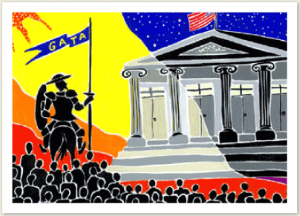 The U.S. gold futures market was created in December 1974 as a result of collusion between the U.S. government and gold dealers in London to facilitate volatility in gold prices and thereby discourage gold ownership by U.S. citizens, according to a State Department cable written that month, obtained by Wikileaks, and disclosed today by the TF Metals Report.
The U.S. gold futures market was created in December 1974 as a result of collusion between the U.S. government and gold dealers in London to facilitate volatility in gold prices and thereby discourage gold ownership by U.S. citizens, according to a State Department cable written that month, obtained by Wikileaks, and disclosed today by the TF Metals Report.
The cable was sent to the State Department from the U.S. embassy in London and signed by someone named Spiers, apparently Ronald I. Spiers, the embassy’s deputy chief at that time.
The cable describes the embassy’s extensive consultations with London bullion dealers about the imminent re-legalization of gold ownership in the United States and possible substantial gold purchases by oil-exporting Arab nations.
The cable reads: “The major impact of private U.S. ownership, according to the dealers’ expectations, will be the formation of a sizable gold futures market. Each of the dealers expressed the belief that the futures market would be of significant proportion and physical trading would be minuscule by comparison. Also expressed was the expectation that large-volume futures dealing would create a highly volatile market. In turn, the volatile price movements would diminish the initial demand for physical holding and most likely negate long-term hoarding by U.S. citizens.”
The cable is interesting not just for confirming the assertions by GATA and others in the gold-price suppression camp that futures markets function largely as mechanisms of commodity price suppression and support for government currencies, an assertion perhaps first made comprehensively in 2001 by the British economist Peter Warburton, but also for showing the close connection between the U.S. government and London gold dealers, some of which are cited by name, including Samuel Montagu & Co., Sharps Pixley & Co., Mocatta & Goldsmid, and Consolidated Gold Fields.
This post was published at GATA

 Follow on Twitter
Follow on Twitter
Recent Comments